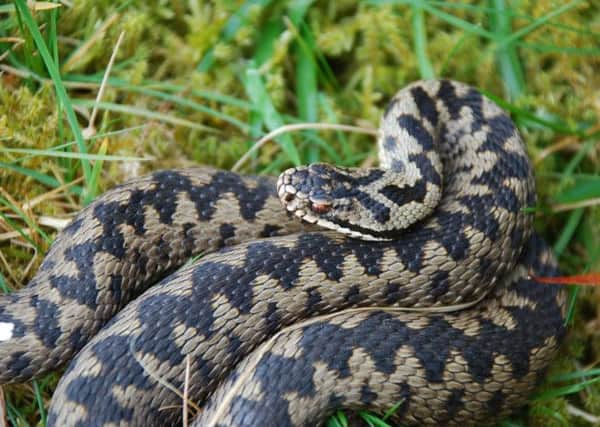Country & Coast: Roger Ratcliffe


As for the A-lister of the British reptile world - the adder - it is hardly ever seen even by those who go looking for it in well-known haunts like the North York Moors and around the northern edges of the Yorkshire Dales.
It is not known how many of them exist in Britain, slithering in and out of the undergrowth, and their lifespan is uncertain - the Forestry Commission estimates that it is probably up to 20 years.
Advertisement
Hide AdAdvertisement
Hide AdSo it was with delight, plus the requisite amount of caution, that I had an encounter with Britain’s only venomous snake last week, and I didn’t have to travel any further to witness it than the lovely lowland heath in the Vale of York known as Skipwith Common, a National Nature Reserve run by Natural England.
I had been told on a visit there some years back that adders as well as grass snakes were known to be present, but on several trips since then they had remained frustratingly elusive.
Last Thursday, though, I saw a solitary male adder, the skin colouring around its dark zig-zagged stripe and line of spots being grey rather than the reddish-yellow of females.
It was basking in the afternoon sun on one of the many concrete surfaces left over from the days when Skipwith Common was part of a Second World War airfield.
Advertisement
Hide AdAdvertisement
Hide AdI watched through my binoculars from a safe distance because the adder - also known as the viper - can be vicious if it feels threatened and is capable of moving with quite exceptional speed, even over the top of heather as I once discovered on a Scottish moor.
It is only a month or so since an adder bit a man three times at Dalby Forest, near Scarborough, resulting in him being airlifted to hospital in a serious condition.
Thankfully, the victim survived his ordeal. The adder’s venom rarely results in death and there have been just a dozen or so fatalities in the UK since Victorian times, the last being in 1975. Statistics show you have far more chance of being fatally stung by a bee than dying from an adder bite.
Usually a bite from an adder causes severe swelling and pain, although some victims have suffered anaphylactic shock and temporary blindness.
Advertisement
Hide AdAdvertisement
Hide AdExperts advise that you are pretty safe so long as you do not accidentally step on one or try to pick it up.
During my encounter I walked around the adder to look at its famous coppery eyes with vertically slit pupils. I thought about how unfortunate it was that this beautiful creature - one of the most fascinating in the British countryside - should have such a fearsome reputation when, in fact, it is normally placid. Adders will only use their venom as a last means of defence.
When the weather turns cold adders go into hibernation.
I suppose that this particular adder, that proved such an unexpected pleasure to me on this lucky visit to Skipwith Common, will possibly find its cosy winter quarters in one of the crumbling old wartime bomb-bays which still remain here and, next March, it will emerge to recharge its batteries with solar energy, perhaps at this very same spot.